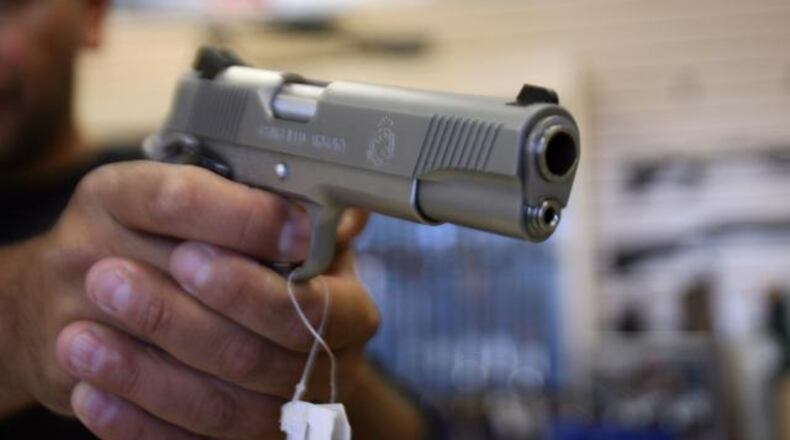In Ohio, firearm injuries are the fourth-highest cause of long hospital stays for severe and traumatic injuries - after burns, motorcycle crashes and pedestrian strikes, according to this newspaper’s analysis of 2017 data from the Ohio Trauma Registry
In 2017, gunshots were also the fourth leading cause of severe and traumatic injuries in Montgomery County that led to hospitalization and the fifth leading cause in Clark County, the data show.
Last year, about 95 people died from gun fire in Montgomery County, about 86 died the year before, according to the Montgomery County Coroner Kent Harshbarger.
“As far as trauma, gunshot wounds are relatively lethal because of the degree of energy that is imparted by a fast-moving projectile,” said Harshbarger. “It does a lot of tissue damage, but that’s a general statement because a gunshot becomes lethal because of what it hits.”
MORE: 6 recent times children have been gunshot victims
In 2017, Franklin, Clark and Montgomery counties had the highest per capita rates of gunshot wounds of all 88 counties in the state, according to data from the Ohio Trauma Registry report.
Franklin County, home to Columbus, recorded 420 gunshot injuries, or 33 per 100,000 residents, according to the recently released report.
Clark County, which is a little more than one-tenth the size of Franklin County, had 42 gunshot wounds, or 31 per 100,000 residents. Montgomery County had 152 gunshot wounds, or 29 per 100,000 residents.
About 13 Ohio counties recorded no gunshot injuries in 2017.
The Ohio Trauma Registry collects and reports data about patients from all the trauma center and hospital registrars across the state.
Some gunshot injuries recorded by the registry occurred out of state but the patients were transferred to an Ohio hospital or trauma center for treatment.
The registry does not try to identify whether the injuries were intentional, accidental or self-inflicted. People who died at the scene of a shooting and not hospitalized are not included in the numbers.
Falls and automobile crashes were the leading causes of severe and traumatic injuries statewide and in Clark and Montgomery counties and in 2017, the registry data show.
The majority of gunshot victims in Montgomery and Clark counties wind up at the Miami Valley Hospital’s Level I trauma center, said Peter Ekeh, a surgeon and medical director of the trauma program.
The Trauma Center, the only Level I in the Dayton area, provides care to the most critically injured patients in 17 counties in southwest Ohio and eastern Indiana, the hospital said.
Many gunshot victims are released from the hospital the same day, sometimes within hours, if they were grazed or suffered only flesh wounds. Other shootings cause fractures and mangle organs and blood vessels.
Some gunshot victims require major surgery and can spend weeks in the intensive care unit at the hospital, Ekeh said.
Depending on circumstances of the shooting, gunshot victims can suffer from lingering psychological effects, like Post Traumatic Stress Disorder, Ekeh said.
In 2017, about 17.6 percent of gunshot victims treated in Ohio spent eight or more days hospitalized, according to registry data.
Only burn victims, people in motorcycle crashes and pedestrians struck by vehicles were more likely to have such long stays in the hospital, the data show.
Gunshot victims are about five times more likely to require blood transfusion than other trauma patients and on average use about 10 times more blood, according to a study of 23,422 trauma patients by researchers at Johns Hopkins University.
Gunshot victims overall were 14 times more likely to die from their injuries than other trauma patients, the Johns Hopkins research found.
Last year, the coroner ruled one shooting death accidental, 51 homicides, 39 suicides and four were undetermined, Harshbarger said.
Gunshot wounds aren’t usually classified as an accident unless the deceased was determined to be very intoxicated or there’s clear evidence they were cleaning their weapon. “We can’t read people’s minds” and there’s not always evidence like a suicide note, Harshbarger said.
Homicides and suicides by firearm represent a fraction of total coroner cases, he said.
“In total cases, they are very low but they are very hazardous because of where people are hit and the speed of the bullet,” he said.
About the Author

